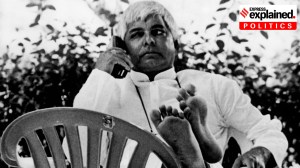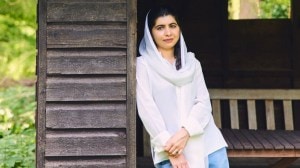Why singer-songwriter Sheherazaad’s debut album Qasr connects with our collective sense of identity
American-Indian singer-songwriter Sheherazaad on collaborating with Arooj Aftab on her debut album Qasr, which deals with questions of displacement and everything in between
 Singer-songwriter Sheherazaad (Credit: Zayira Ray)
Singer-songwriter Sheherazaad (Credit: Zayira Ray)Growing up in an Indian home in Silicon Valley, singer and songwriter Sheherazaad, like numerous South Asians around her, was not untouched by questions of identity, sense of belonging and one’s place in the world. Living among those in the Bay area neighbourhood who were “model minorities” – brilliant at academics and were either doctors or engineers – Sheherazaad was the girl who sang at local western pop singing competitions. Unlike most from her community at the time, she could copy numbers by Aretha Franklin, Whitney Houston, and Mariah Carey and had sort of ingested and learned to mimic accurately, the American classic repertoire in singing competitions: ones that were all about ‘who has the biggest voice’.
“But soon it started to feel funky and a bit circus-y. I realised that the voice was ultimately coming from me – this brown-skinned girl. I psychologically wasn’t predisposed to or conditioned to think that my face could go along with that. I started to think of them as two different entities and stopped singing,” she says.
It was only a few years later, when Sheherazaad started college in New York and began to study race theory, Asian-American history, literature, art and music and discovered the British underground movement of the ’70s and ’80s that she allowed herself to let go of English and western music as her language of expression and imbibed Hindi and Urdu, to connect to the language of her ancestors. The result is Qasr (Erased Records), her debut mini-album that was released earlier this year to much appreciation. And the word does not mean deficiency as it does in Hindustani. This is teh Arabic use of the word which means a fortress
A Covid project, produced by Grammy-winning Pakistani singer and producer Arooj Aftab, the album opens with the Mashhoor, a haunting single with minimal accompaniment (strings mainly) that speaks of what fame means in today’s world and is centred around the South-Asian immigrant story. It goes into other tracks such as Dhoond lo mujhe and Lehja, all dealing with the turmoil within, a sort of back and forth to preserve history of oneself.
“I never thought that someone who looks like me was going to make an album. The blonde-haired, blue-eyed girls that I grew up with, they were going to get signed to a record label and make albums. I thought I’ll probably go to Stanford and maybe become a doctor or an engineer,” says Sheherazaad, who was taken aback by the critical acclaim she received for the album, “a sort of paralysis… which came from this internalisation from childhood”.
She goes by a different name in her day-to-day life and took up the artistic name, meaning “free city” to accentuate her musical aesthetic. In Middle-Eastern folk tales, Sheherazaad is a revolutionary character, a storyteller, whose genius and skill in telling stories saves numerous lives. The layers in the album, created in the privacy of a little studio, were also her way to “channel personal feelings about the Trump era descending on America, and the loss of an elderly ancestor”.
Sheherazaad grew up with music at home. While her grandmother Prabha Gopal is a cultural impresario in the Bay area and for many years has been known to set up shows for Indian classical artistes including Pt Ravi Shankar, Pt Shiv Kumar Sharma and Ustad Zakir Hussain on the West Coast, Sheherazaad’s own parents had eclectic tastes in music which ranged from Lata Mangeshkar to RD Burman and The Carpenters. “My mom and dad were hippies and I don’t use that term lightly because in 1970s, they were in Berkley, the incubation ground for the world-wide hippie movement. They were both weed-smoking, disco-going hippies who heard a lot of classics. They are pretty weird in a great way. But never put culture down my throat like a lot of the parents did. Which is why I couldn’t relate to other kids around me. It’s interesting how I find most South Asian kids my age to be so American and myself more Indian,” says Sheherazaad.
She came across Aftab in New York while she was in college at NYU and found out about an underground South-Asian concert put together by actor and musician Riz Ahmad, “who wasn’t so well-known then”. The curated list of bands came with big sounds, but Sheherazaad was taken by Aftab’s bass voice. “I was just really consumed by her artistry. What I liked was, there were these big bands with big sounds and then there was just her voice in the lower register, not the kind of voice to suit the male register, and that someone was doing these ancient things on the stage. It was so imperfectly perfect,” says Sheherazaad, who began working on the album way before the Grammys.
In her quest to find herself, Sheherazaad has also been training in Hindustani classical music besides learning Arabic as there were no proper Hindi classes around. “When I went to this tiny community college, the language was being taught by the head of Arabic at Stanford. I was the only non-Arab kid in the class. But there was such a seamless, homely feeling. I picked it up very easily,” says Sheherazaad, whose music lies in the in-betweenness of her identity, the space which is also her comfort zone. “It’s a beautiful space to be in. It gives you a lot of empathy and the ability to connect with other immigrant experiences.”



- 01
- 02
- 03
- 04
- 05




























